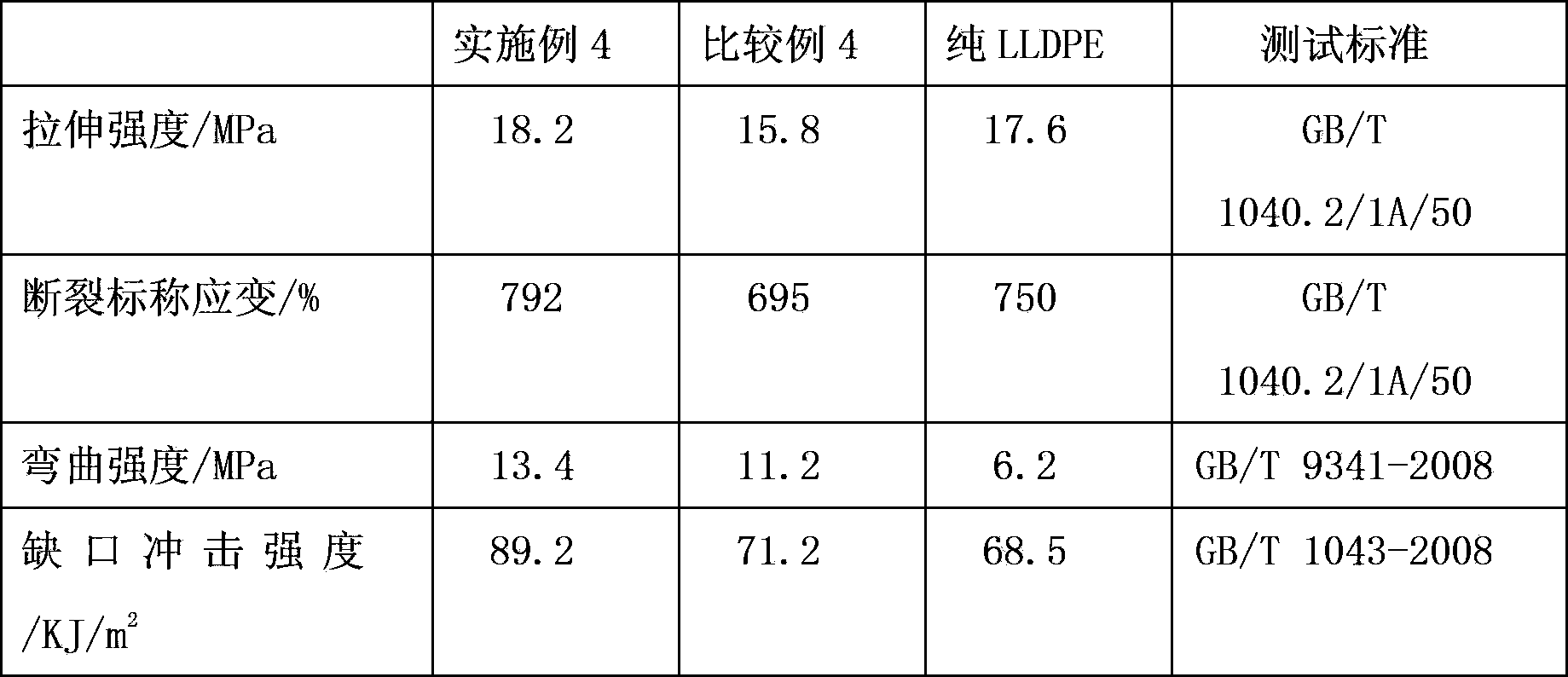Cross-linking-type organic polymer-calcium carbonate composite particles and preparation method thereof
A technology of composite particles and polymers, applied in the treatment of dyed low-molecular-weight organic compounds, dyed high-molecular organic compounds, fibrous fillers, etc. Simple method and good mechanical properties
- Summary
- Abstract
- Description
- Claims
- Application Information
AI Technical Summary
Problems solved by technology
Method used
Image
Examples
Embodiment 1
[0030] Add 2 parts (weight, the same below) of PEG with a number average molecular weight of 1500, 0.8 part of trimethylol melamine, and 0.1 part of aluminum trichloride to 50 parts (weight, the same below) of distilled water, fully Stir to combine well. Add 100 parts of 1250 mesh heavy CaCO to a 500ml Erlenmeyer flask 3 and the mixed liquid, stir evenly at high speed and then vacuum dry to remove moisture. The mixture was placed in a high-speed mixer, stirred (rotating speed 2000 rpm) and heated to 80°C, reacted for 8 minutes, and then heated to 140°C, reacted for 10 minutes. The reactant was cooled to room temperature, and white CaCO was obtained after pulverization 3 Powdered product. After determination, the activation degree of the product is 98.8%, and the cross-linking degree of PEG is 83%.
Embodiment 2
[0032] Add 3.5 parts (by weight, the same below) of PEG with a number-average molecular weight of 400, 1.5 parts of toluene 2,4-isocyanate, and 0.25 parts of dibutyltin dilaurate into 50 parts of distilled water, stir well and mix well. In a 500ml Erlenmeyer flask, add 100 parts of 2500 mesh heavy CaCO 3 and the mixed liquid, stir well and then dry to remove moisture. The mixture was placed in a high-speed mixer, stirred (1800 rpm) and heated to 80°C for 8 minutes, then heated to 100°C for 12 minutes. The reactant was cooled to room temperature, and white CaCO was obtained after pulverization 3 Powdered product. After determination, the activation degree of the product is 99.4%, and the cross-linking degree of PEG is 81%.
Embodiment 3
[0034]Add 0.5 part (by weight, the same below) of PEG with a number average molecular weight of 2000, 0.5 part of toluene 2,4-isocyanate, and 0.02 part of sodium bisulfite into 50 parts of distilled water, stir well and mix well. Add 100 parts of 400 mesh light CaCO to a 500ml Erlenmeyer flask 3 and the mixed liquid, stir at high speed and then dry to remove moisture. The mixture was placed in a high-speed mixer, stirred (2500 rpm) and heated to 80°C for 8 minutes, then heated to 100°C for 12 minutes. The reactant was cooled to room temperature, and white CaCO was obtained after pulverization 3 Powdered product. After determination, the activation degree of the product is 98.4%, and the cross-linking degree of PEG is 79%.
PUM
| Property | Measurement | Unit |
|---|---|---|
| activation index | aaaaa | aaaaa |
| activation index | aaaaa | aaaaa |
| activation index | aaaaa | aaaaa |
Abstract
Description
Claims
Application Information
 Login to View More
Login to View More - R&D
- Intellectual Property
- Life Sciences
- Materials
- Tech Scout
- Unparalleled Data Quality
- Higher Quality Content
- 60% Fewer Hallucinations
Browse by: Latest US Patents, China's latest patents, Technical Efficacy Thesaurus, Application Domain, Technology Topic, Popular Technical Reports.
© 2025 PatSnap. All rights reserved.Legal|Privacy policy|Modern Slavery Act Transparency Statement|Sitemap|About US| Contact US: help@patsnap.com



